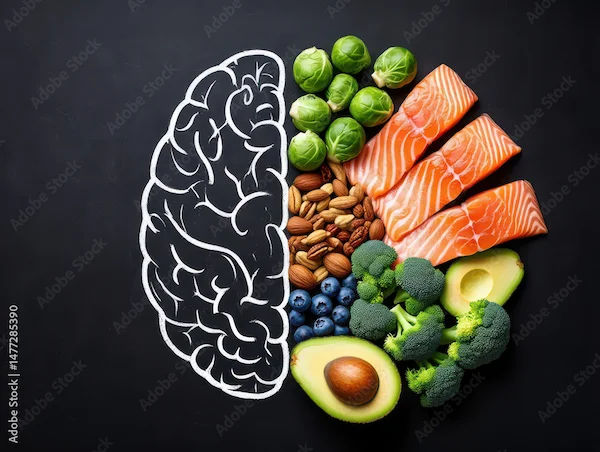Sensory Memory Types
Explore the different types of sensory memory, including iconic, echoic, and haptic memory. Learn how these memory systems work and their role in processing sensory information.

Written by Dr.Sonia Bhatt
Last updated on 3rd Jul, 2025

Sensory memory, also known as the sensory register, is a brief storage of information gathered from your senses, including hearing, touch, smell, taste, and vision. This type of memory captures information with the highest level of detail, essentially taking a quick snapshot of your surroundings. It then transfers this information to your short-term memory. The duration of these memories cannot be controlled, but they typically last only a few seconds. This process helps you become more aware of the subtle details in your environment. In this blog we will learn all about sensory memory.
Types of Sensory Memory
Each sense is linked to a different type of sensory memory, including:
1. Iconic Memory (Visual): This type of memory is associated with vision. It has a large storage capacity but only retains information for less than a second. The brightness of an image can extend its presence in iconic memory for a slightly longer period.
2. Echoic Memory (Auditory): Echoic memory relates to sound and hearing. It takes a few seconds for the brain to process echoic memories. Once sound enters the ear, the temporal lobe processes it. This memory is crucial for language learning, and individuals with speech difficulties may store these memories for shorter durations.
3. Haptic Memory (Tactile): Haptic memory is linked to the sense of touch. It includes sensations such as pressure, pain, itching, or pleasure. This memory type helps you recognise and identify objects you touch.
4. Olfactory Memory (Smell): Olfactory memory is connected to the sense of smell. When you smell something, the information is quickly sent to areas of the brain responsible for long-term memory. Olfactory memory also helps with taste identification, as molecules from food travel up to your nose. Without the sense of smell, you would only be able to detect basic tastes like sweetness.
5. Gustatory Memory (Taste): Gustatory memory is associated with taste and works closely with olfactory memory. It helps you identify foods by the five basic flavours your tongue detects through gustatory receptor cells:
Salty
Sweet
Bitter
Umami
Sour
Characteristics of Sensory Memory
The characteristics of sensory memory are as follows:
1. Short-lived: Sensory memory is a brief collection of information from the senses, typically lasting only a few seconds.
2. Large Capacity: Sensory memory has a large capacity, but it only retains information as long as the sense is actively stimulated.
3. Highly Detailed: Sensory memory is a mental representation of how things look, sound, feel, smell, and taste, capturing a rich level of detail.
4. First Step in Perception: Sensory memory is the initial stage in the process of perception, where raw sensory data is gathered before further processing.
5. Different Types for Each Sense: Each sense has its own type of sensory memory, such as iconic memory for vision and echoic memory for sound.
6. Transitions to Short-Term Memory: Information from sensory memory moves into short-term memory, where it may be retained if consciously acknowledged.
Role of Sensory Memory in Perception
The role of sensory memory in perception are as follows:
1. Provides a Complete Sensory Picture: Sensory memory retains a detailed representation of sensory input, even if we are not consciously aware of all its elements.
2. Enables Rapid Response: By quickly capturing information from the environment, sensory memory allows us to respond to stimuli almost instantaneously.
3. Selective Attention: Sensory memory enables us to focus selectively on the important aspects of our environment while filtering out irrelevant information.
Experiments and Theories
Some experiments and theories about sensory memory are as follows:
1. Sperling's Partial Report Technique
This experiment, designed by George Sperling, aimed to measure the capacity of iconic memory (visual sensory memory). Participants were shown a grid of letters for a brief moment and then instructed to recall only a specific row, indicated by a tone. The results demonstrated that individuals could access far more information in their sensory memory than they could consciously report when given the correct cue.
Sperling's Key Finding:
Iconic memory holds a large amount of visual information for a very short period, allowing for partial recall if cued correctly.
2. Broadbent's Filter Model
Proposed by Donald Broadbent, this theory explains selective attention. It suggests that information from various sensory inputs enters the sensory register, but only the information that passes through an attentional filter—based on physical characteristics (such as the ear a sound came from)—is processed further. This filter effectively blocks out irrelevant stimuli before meaning is processed.
Broadbent's Key Concept:
An early selection filter prioritises information based on basic physical features, before any meaning is processed.
Implications and Applications
The implications and applications of sensory memory explore how this brief but crucial form of memory influences perception, learning, and daily functioning, offering insights into cognitive processes and potential interventions for memory-related conditions.
Implication and applications of sensory memory are as follows:
1. Educational Techniques Utilising Sensory Memory
The use of sensory memory in educational techniques includes:
Sensory memory can be used in education to enhance learning through brief visual or auditory stimuli.
Techniques like using flashcards with images or sounds can help reinforce memory retention.
Encouraging students to focus on key sensory cues can improve attention and retention during lessons.
2. Sensory Memory in Everyday Life
The role of sensory memory in everyday life are as follows:
Sensory memory helps us respond quickly to environmental stimuli, such as loud noises or potential hazards.
It aids in recognising familiar objects, faces, and sounds, allowing for efficient navigation of surroundings.
In social interactions, sensory memory helps interpret non-verbal cues like facial expressions and body language.
Sensory Memory and Disorders
Effect of sensory memory on disorders:
1. Impact on Learning Disabilities
Impact on learning disabilities includes:
Sensory memory plays a crucial role in processing information for individuals with learning disabilities. If sensory memory is impaired, it can impact the ability to process and retain information, particularly in tasks requiring attention and focus.
Students with sensory processing disorders may struggle to effectively capture and filter sensory input, leading to difficulties in classroom settings or in performing everyday activities.
2. Neurological Disorders and Sensory Memory Deficits
Neurological disorders and sensory memory deficits are as follows:
Neurological disorders such as Alzheimer's disease, Parkinson's disease, and multiple sclerosis can affect sensory memory, leading to difficulties in retaining sensory information and interpreting environmental stimuli.
Conditions like these may result in deficits in echoic, iconic, or haptic memory, affecting how individuals process auditory, visual, or tactile stimuli.
Damage to specific brain areas responsible for sensory processing (like the temporal lobe for echoic memory or the occipital lobe for iconic memory) can disrupt sensory memory functioning.
Enhancing Sensory Memory
Ways to enhance sensory memory are as follows:
1. Techniques and Exercises
Techniques and exercises for enhancing sensory memory includes:
Cognitive exercises, such as memory games and puzzles, can help strengthen sensory memory by encouraging the brain to focus on retaining sensory information.
Activities that engage all five senses (such as cooking, music, or art) can improve the processing and retention of sensory input.
Mindfulness practices, which enhance attention to present sensory experiences, can help improve the duration and quality of sensory memory retention.
2. Role of Sensory Cues and Stimuli
The role of sensory cues and stimuli are as follows:
Sensory cues, such as specific colours, sounds, or tactile experiences, can act as triggers to enhance sensory memory by focusing attention on important stimuli.
Repetition of stimuli in various forms can improve the encoding of sensory memories into short-term memory and aid recall.
In educational settings, the use of sensory-based learning tools (e.g., visual aids, sounds, textures) can strengthen memory by creating richer, multi-sensory experiences for students.
Conclusion
Sensory memory is essential for processing and responding to the world around us, capturing detailed information from our senses and quickly transferring it to short-term memory. Each sense has its unique form, helping us navigate our environment with rapid responses and selective attention. Experiments and theories, like Sperling's Partial Report Technique and Broadbent's Filter Model, highlight its significance in perception. Understanding sensory memory enriches learning and helps us process sensory information efficiently, aiding both cognitive health and everyday functioning.

Dr. Avinash Gupta
Neurologist
12 Years • MBBS, DNB - Neurology
Bilaspur
Apollo Hospitals Seepat Road, Bilaspur
(150+ Patients)

Dr. Uddalak Chakraborty
Neurologist
8 Years • MBBS, MD(GENL.MED.),DM(NEUROLOGY)
Kolkata
MCR SUPER SPECIALITY POLY CLINIC & PATHOLOGY, Kolkata
(25+ Patients)

Dr. Joydeep Biswas
Neurologist
15 Years • MBBS, DNB General Medicine, DNB Neurology
Barasat
Diab-Eat-Ease, Barasat

Dr. Uddalak Chakraborty
Neurologist
8 Years • MBBS,MD(GENL. MED.),DM(NEUROLOGY)
Kolkata
VDC Clinic, Kolkata

Dr. Jaidev S
Neurosurgeon
10 Years • MBBS, MS ( Genera Surgery), MCH Neurolosurgery
Bengaluru
Apollo Clinic, Indiranagar, Bengaluru
